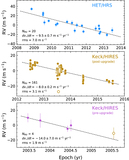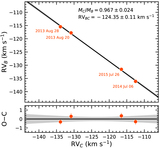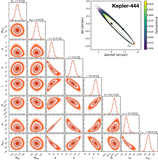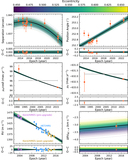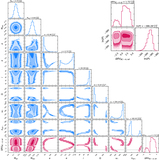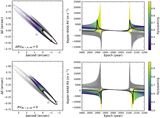Image Details
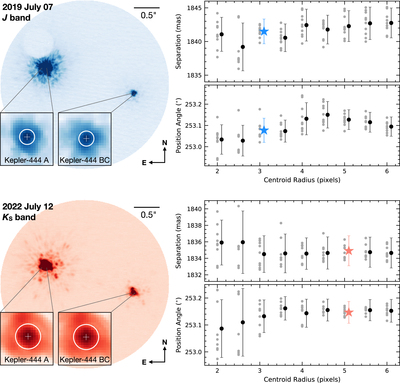
Caption: Figure 1.
Top left: a typical reduced and north-aligned J-band science frame of Kepler-444 observed on 2019 July 7 UT. Insets present the 20 pixel × 20 pixel vicinity of A (left) and BC (right) components with their centroids marked by plus signs, computed using a 3-pixel-radius circular region (white circle). A coronagraph mask is visible to the northeast of Kepler-444 A and does not impact our relative astrometry measurements. Top right: centroids of A and BC iteratively computed using a range of circular radii (Section 3.1). At each radius, we show the computed separation and position angle of individual science frames observed on 2019 July 7 UT (gray circle), as well as the resulting separation and position angle measurements with uncertainties computed from Equation (2) (black circle). Our final separation and position angle measurements for the J-band data are based on a circular radius of 3 pixels and are highlighted as blue stars. Bottom: analysis of K S -band data observed on 2022 July 12 UT with the same format as the top panel. The white circles in the insets and our final relative astrometry all correspond to a radius of 5 pixels.
Copyright and Terms & Conditions
© 2023. The Author(s). Published by the American Astronomical Society.


